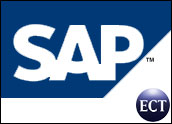
Starting around August of last year I started tracking down SAP users that were early adopters of the NetWeaver platform, and I found an interesting dynamic that led me to continue researching what was going on. What I found was that SAP was attracting entirely new customers based on the NetWeaver platform.
What makes this unique in the SAP world is that the vast majority of SAP applications get sold because there is an ERP instance somewhere in the organization to tie back to. Rarely, if ever, in the years of doing primary research on SAP’s customer base, would I find a reference to one that had just come on board for its channel-management applications, for example.
NetWeaver, on the other hand, is starting to show up as the architecture for future Web Services in some companies that were not multi-decade ERP customers. This finding contradicted many people’s perceptions — including my own — of just how SAP goes about selling its applications. I decided to go all out and complete a research study of SAP NetWeaver early adopters — mostly out of personal interest, but also because I love doing primary research and wanted to see what could be learned.
Research Results
It’s a good thing I started this project in August — as a hobby, of sorts — because getting people to respond to a survey on this topic requires a fair amount of effort. Also, I attended SAP user-group meetings in my area and continued to work at getting the Zoomerang survey to people who were kind enough to provide their e-mail addresses.
The big break in getting connected with NetWeaver users came from a friend at Disney who introduced me to several, and the networking started working from there. From that point, I was able to put together a decent sample size of 300 companies distributed globally, and I visited many companies locally through user-group meetings and buying lunches.
The result is a report published in December titled Users Speak Out About SAP NetWeaver.
Here are some of the key take-aways from the research:
- The majority of manufacturing companies start out with the vision of unifying databases that had been siloed nearly out of existence in the past so channel strategies can be more aggressively pursued. This focus on creating a competitive advantage through better integration pervaded my conversations with users.
- Integration to support growth strategies was, by far, the largest driver of investment. Companies looking to turn their data warehouses into a competitive advantage outnumbered those looking to consolidate databases in general. There is a definite atmosphere of using NetWeaver as a platform to stimulate revenue growth over simply completing database consolidations.
- Consolidating portals onto a single platform is the direction Halliburton and others are going with their NetWeaver strategies. This is a common theme for many of the early adopters; they want to have a single portal for most — if not all — applications in specific business units.
- In manufacturing industries, the challenge of handling Engineering Change Orders (ECOs) and order change sequencing between Oracle and SAP systems has caused shared customers much pain. For example, custom development was required to mediate between both systems’ change order numbering sequences.
- One high-tech manufacturer uses SAP NetWeaver as the integration hub for its order capture, order management and fulfillment systems, including integration with an Oracle supply chain system.
The payoff for this manufacturer is the elimination of manual product option updates that were previously done at the director level of the company — senior managers are the only ones who carry the inter-relationships of products in their heads. Now, instead of having to work one weekend a month to update the order capture systems, directors can have a Saturday off.
- One heavy-equipment manufacturer did an ROI analysis for NetWeaver integration and built in assumptions of cost savings based on headcount reductions. As the NetWeaver integration project came online, it was apparent that more integration engineers were needed than were budgeted for, and two ended up being reassigned to that work.
This is a familiar situation for companies that did ROI analyses of NetWeaver projects; they focused on headcount reductions and ended up reassigning engineers and staff they thought they would not need anymore.
- When customers who chose SAP for NetWeaver were asked why they made that decision, the two most common responses were integration experience, and pricing or licensing. There was an even mix of responses citing industry expertise and ease of customization as well.
- When SAP customers with a median of six to 10 years of experience with SAP were asked what they would most like to change about the company, they asked for simplification and easier management of licenses. Specifically, they asked for a portal view of all licenses so they could manage their entire SAP investment efficiently.
SAP Satisfaction Levels
The majority of companies are either satisfied or somewhat satisfied with SAP, my research shows, and this is a fascinating point. For the next survey, the question of why satisfaction is where it is needs to be explored.
If you are an SAP customer, feel free to participate in the survey. I will provide a summary of the results next month.
Bottom Line
There’s not that much of a correlation between over-the-top enthusiasm in the SAP base and NetWeaver adoption. In other words, the SAP zealots out there aren’t necessarily leading the charge to NetWeaver. What is fueling the interest is the integration expertise that new customers are seeing and the ability to get clear licensing and pricing terms nailed down early in their relationships with SAP.
Louis Columbus, a CRM Buyer columnist, is a former senior analyst with AMR Research. He is the author of several books on making the most of analyst relationships, including Best Practices in Analyst Relations, which can be downloaded for free.
















































